Uncoupling with Neodymium magnets
Posted
#80332
(In Topic #4468)
Full Member
Doofer has a play....
Prior to laying any track I did this experiment, having seen the use of cupboard door catches and paper staples featured here a while back on tension-lock couplings. I have used some Neodymium magnets, 4.5mm in diameter and 2mm thick given to me by a chum who should have ordered bigger ones. They, and the track were centred over some double sided sticky tape to try out different spacing.They'm mighty powerful!
I understand they are availble on E-bay etc for less than £4 per dozen and are small enough to fit between tracks. 25mm apart seems a good distance. They would obviously look less obtrusive if painted black and very lightly covered with ballast, or alternatively some imitation plastic drain covers etc glued on top.
Poop-poop!
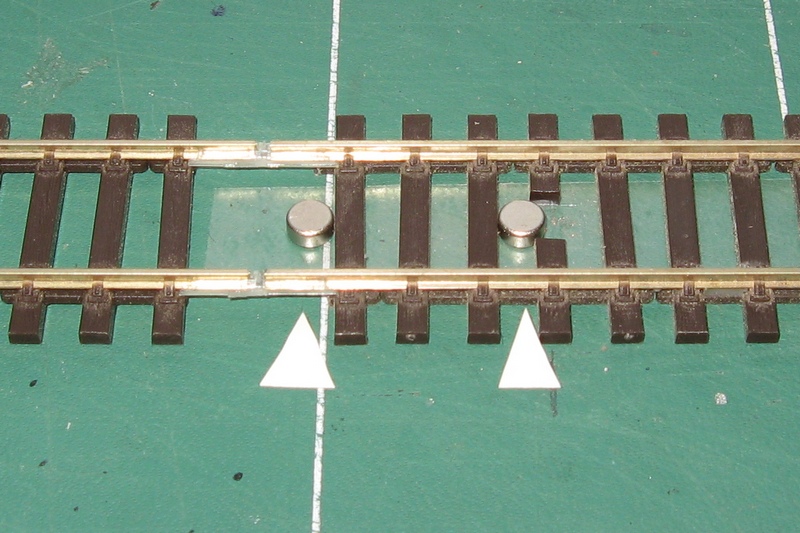
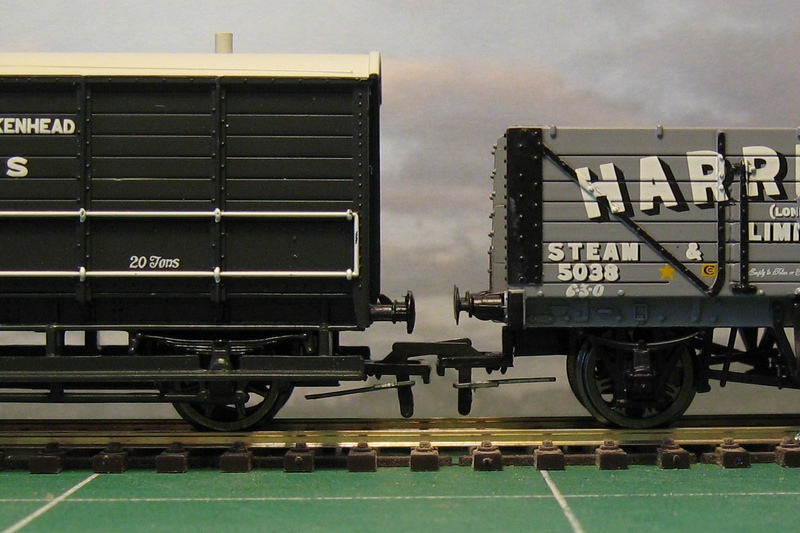
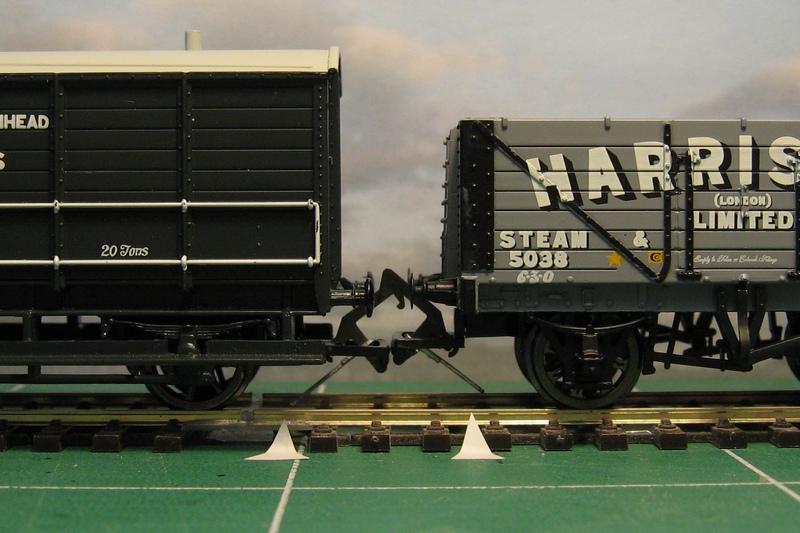
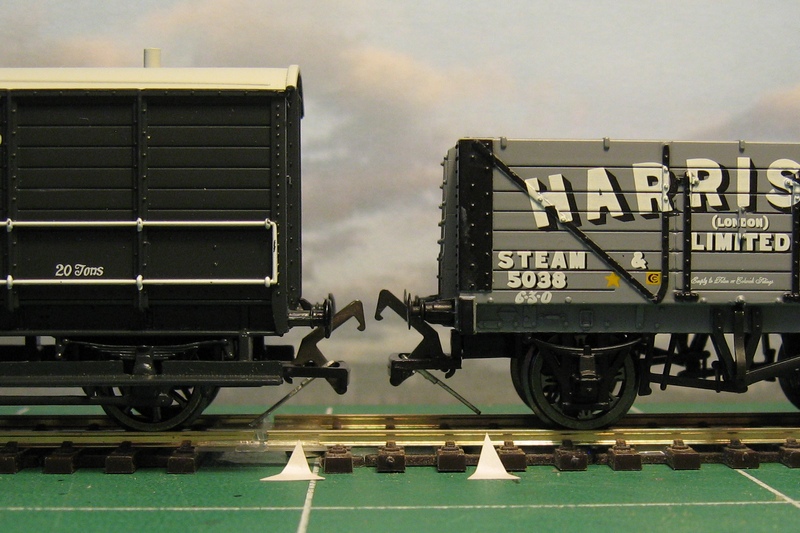
'You may share the labours of the great, but you will not share the spoil…' Aesop's Fables
"Beer is proof that God loves us and wants us to be happy" - Benjamin Franklin
In the land of the slap-dash and implausible, mediocrity is king
"Beer is proof that God loves us and wants us to be happy" - Benjamin Franklin
In the land of the slap-dash and implausible, mediocrity is king
Posted
Guest user
They seem to work fine and they are certainly not expensive from my favourite suppliers on fleabay who deliver in a couple of days.
Cheers
Dave
Posted
Full Member
Doug
'You may share the labours of the great, but you will not share the spoil…' Aesop's Fables
"Beer is proof that God loves us and wants us to be happy" - Benjamin Franklin
In the land of the slap-dash and implausible, mediocrity is king
"Beer is proof that God loves us and wants us to be happy" - Benjamin Franklin
In the land of the slap-dash and implausible, mediocrity is king
Posted
Inactive Member
Max
Port Elderley
Port Elderley
Posted
Full Member
Magnets for uncoupling
If you go to Maplins, look for Magtrix magnetic connectors. At £2.49 for 5 pairs they'll save a fortune on Kadee ones and they disappear to the extent that, once ballasted, the only way to find them is with either paint on sleeper end or a suitable small bush/weed beside the track. They are slightly position critical. Draw a line across the track, measure 3mm either side, and draw two more lines. Draw two lines marking the inside edges of the track. Drill a 5.5mm hole at the points where the lines cross (one using the left hand line for the rail furthest away and one using the right hand line for the rail closest to you.) The hole only needs to be about 2.5-3mm deep. You will need to continue the hole through the baseboard, using a 1mm drill, to take the wire attached to the magnet. When positioned properly the magnet should be just below the rail itself, and slightly towards the centre of the track(ie not squarely under the rail). Now add ballast, and curse because you forgot to mark where the magnet is!
I had a go at this. The magnets referenced have an integral wire attached to one pole as they are intended to provide easy connection to batteries. I found it much harder to get right than simply placing a large Kadee magnet under the track.
Posted
Guest user
they are far too powerful they just pull the whole coupling over.
 lol:
lol: :cool:
:cool:
Posted
Inactive Member
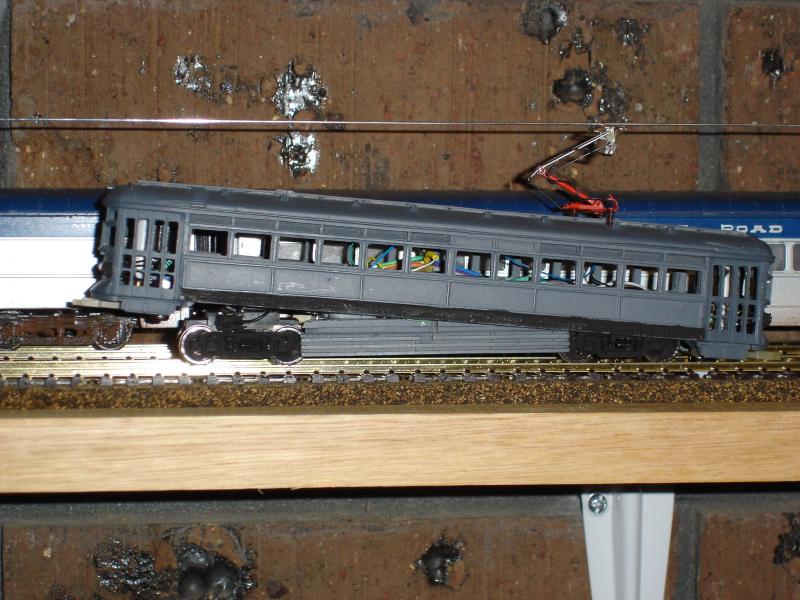
Good call. Thanks.:thumbs
Max
Port Elderley
Port Elderley
Posted
Full Member
Otherwise known as rare earth element magnets. I've used them for the panto flash in my trams. They're brilliant. I'm going to have a go with the Kadee couplers. If they work, they will be much less obtrusive than the Kadee magnets. Good find!!
Max, can you reveal more about how you created a "panto flash" please? I want to create a flash on the underground part of our module to go off as the train enters and perhaps leaves the station.
Posted
Inactive Member
Max
Port Elderley
Port Elderley
Posted
Full Member
Posted
Inactive Member
As the tram passes over the magnet, the reed switch is closed momentarily, flashing the LED. As the track power is AC, the LED may be connected either way around. I didn't use a protective diode, as I didn't know any better.
From the sound of it, the magnet needs to be in the loco and the LED/reed switch combo in the tunnel. The reed switch could be mounted in the ballast between the ties, as could be the LED. As many locos as have magnets will fire off the flash.
Well that's my theory, anyway. :roll: Does any of that make a modicum of sense?
Max
Port Elderley
Port Elderley
Posted
Inactive Member
Max
Port Elderley
Port Elderley
Posted
Guest user
Not a panto flash as such, but on the london underground, when the pickups leave one live rail and pass over to the next, there is often an associated flash. Don't know how much these still happen, but in the old days, you often saw the flash before you saw the train!
It does still happen and on the national network as well, especially on frosty or icy mornings.
It only happens while the train is drawing power though.
Posted
Full Member
Stu
Stubby47's Bespoke Model Buildings
All photos I post are ©Stu Hilton, but are free for use by anyone.
Posted
Guest user
Posted
Full Member
I've also used the magnet/staple idea on Bachmann couplings, but have removed the hooks from one end of each item of stock, so only need one magnet in the trackbed.
Stu
That's a good idea, Stu, on my BLT that would do very well!
Doug
'You may share the labours of the great, but you will not share the spoil…' Aesop's Fables
"Beer is proof that God loves us and wants us to be happy" - Benjamin Franklin
In the land of the slap-dash and implausible, mediocrity is king
"Beer is proof that God loves us and wants us to be happy" - Benjamin Franklin
In the land of the slap-dash and implausible, mediocrity is king
Posted
Guest user
Sound reasonable straight forward
Toto
Posted
Inactive Member
Posted
Full Member
Doug
'You may share the labours of the great, but you will not share the spoil…' Aesop's Fables
"Beer is proof that God loves us and wants us to be happy" - Benjamin Franklin
In the land of the slap-dash and implausible, mediocrity is king
"Beer is proof that God loves us and wants us to be happy" - Benjamin Franklin
In the land of the slap-dash and implausible, mediocrity is king
Posted
Full Member
Yup! I have found runny superglue is best, applied by a needle tip, and less is deffo more. I did try two part resin, but it was so messy and went off before I had managed two wagons. I held the wagons between two pieces of firm foam in a g-clamp laid on the bench to give me two free hands. I left the doofer a bit long and snipped it off after an hour or so so that it didn't catch any point work.That's about it Toto, provided the doofer on the whatsit is steel.
Poop-poop,
Good luck,
Doug
 Last edit: by Chubber
Last edit: by Chubber
'You may share the labours of the great, but you will not share the spoil…' Aesop's Fables
"Beer is proof that God loves us and wants us to be happy" - Benjamin Franklin
In the land of the slap-dash and implausible, mediocrity is king
"Beer is proof that God loves us and wants us to be happy" - Benjamin Franklin
In the land of the slap-dash and implausible, mediocrity is king
1 guest and 0 members have just viewed this.

